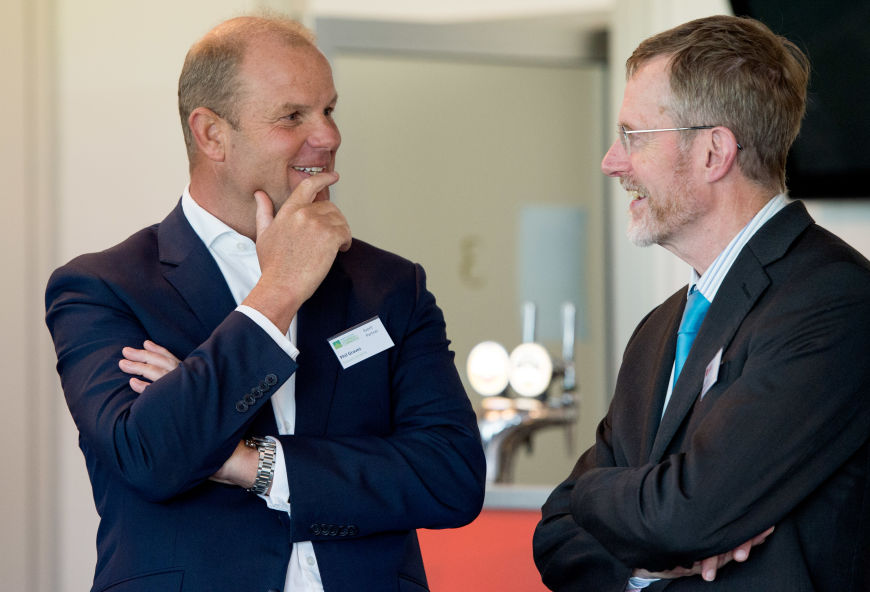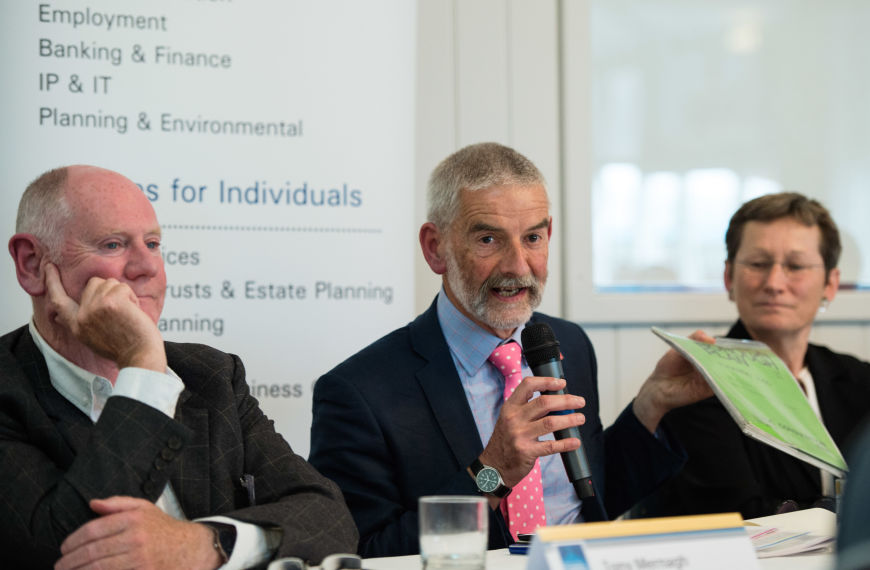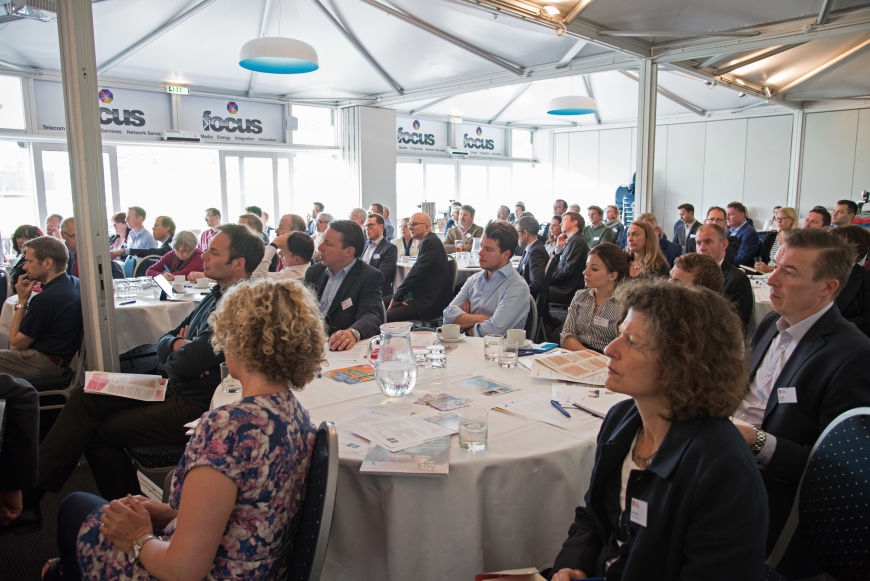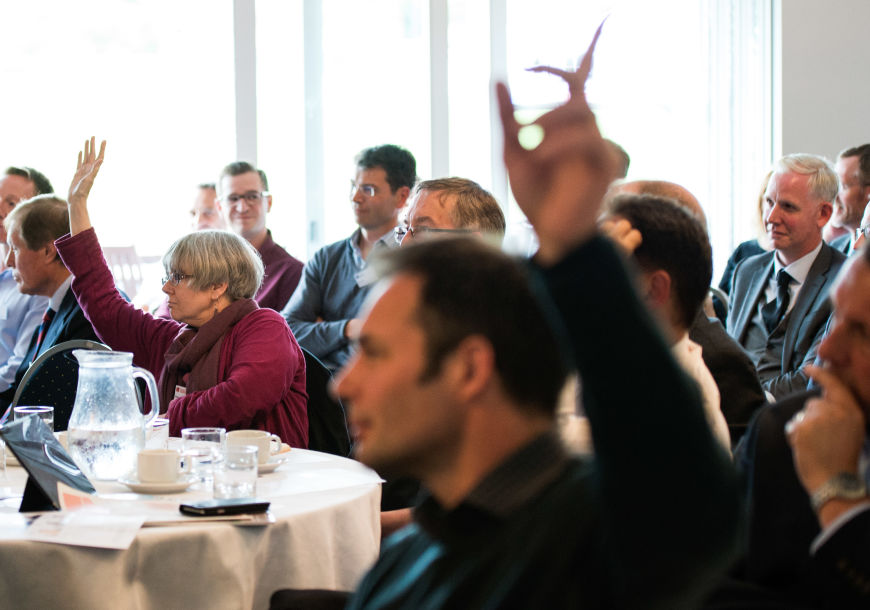
Fri 08 / 07 / 16
Construction Voice: City Plan Part 2 – aspirational and achievable?
The most recent Construction Voice event looked at the City Plan Part 2 and whether it is aspirational and achievable. Steve Bustin, Chair of the event, gives us a breakdown of the discussions that took place.
If there’s one thing that unites the residents of our city, it’s caring about the future of Brighton and Hove. What that future – and our city – may look like is possibly a little less united, with hundreds if not thousands of different ideas, opinions, hopes, designs and ambitions.
Much of that future, in terms of the built environment at least, lies with Brighton and Hove City Council, who have to listen to those myriad opinions and try to shape a strategy that takes account of competing needs and desires. They have to think about the desperate need for housing but balance it with the shortage of workspaces, or the ambitions of our two universities to grow and expand balanced with the general populations ambivalent (at best) views on living cheek by jowl with yet more students.
The panel, chair and sponsor
The latest Construction Voice event (organised jointly by The Brighton and Hove Chamber of Commerce and event partners Haydon Consulting, Graves Jenkins and Robinson Low Francis) played host to the unveiling by the City Council of City Plan Part 2 – the latest part of a major document that will map out the future city and the city’s future up to 2030 and possibly beyond.
The City Plan is arguably the most important part of Brighton & Hove City Council’s Local Development Framework, setting out the overall strategic and spatial vision for the future of Brighton & Hove through to 2030. City Plan Part 1 was adopted at Full Council on 24th March this year.
Part 2 will involve some of the hardest decisions for the council and all local stakeholders as this part of the plan looks at site allocations and development management policies, i.e. determining what gets built – and where. For example, we’ve got to find space for 13,200 new homes in the city and spaces for the additional residents to work and study.

Phil Graves and Rob Fraser
The event was kicked off by Acting Executive Director for Economy, Environment and Culture and Head of City Regeneration for Brighton and Hove City Council, Nick Hibberd. Nick gave a brief overview of progress of both Part 1 and the new Part 2 of City Plan. Nick asked whether the city’s spatial policy could ever keep up with our economic aspirations for Brighton and Hove, and how we can keep all the diverse stakeholders on board, without leaving anyone behind.
Nick was followed by Liz Hobden, Planning Policy Manager for the City Council, who gave a summary of how City Plan Part 2 will impact on 5 key areas: employment space; retail, culture and tourism; housing; students and education and finally the development of smart and sustainable cities.
Liz identified many challenges, not least of which was the issue of demand far outstripping land identified as available for housing or business use. She also raised the idea that perhaps the council should look at underdevelopment as an issue as much as over-development when examining plans and proposals, to ensure that the land is used to its capacity (although not over-capacity) for its designated use.
Liz talked in some detail through all five areas but raised questions and discussion points rather than announcing firm plans, as the whole plan is now up for the first stage of consultation – with the event forming the first element of that consultation process.
The event then turned to a panel of experts for their comments on each area up for discussion. This part of the evening was opened by Tony Mernagh, Managing Director of Brighton & Hove Business Forum and a former chair of the City’s Local Strategic Partnership and Executive Director of the Economic Partnership. Tony addressed the Employment and Workspace part of Liz’s presentation.
Tony suggested that the plan would not deliver what the city needs, i.e. the required amount of workspace to meet the requirements of a growing economy because it does not identify sufficient land for this purpose. As a consequence, both employers and workers would be obliged to leave the city as they grew. He also posited that currently there is too much emphasis on maintaining land and property for retail, pointing out that time spent in ‘bricks and mortar’ shops has dropped as retail moved online and our current over-supply of retail space is not sustainable, although he recognised the lure of specialist shops in the Lanes and North Laine for tourists and visitors.
Tony also asked whether land owned by the council could be better used and utilised and whether there should be a bid to make coordinated and strategic use of all public assets in the city region.
The discussion then moved on to look at retail, tourism and culture, with Associate Director of Blue Sail and former Head of Tourism at Brighton & Hove City Council, Adam Bates, addressing the points raised in City Plan 2.
Adam emphasized the need for tourism development to support the businesses in that sector, especially those in the ‘inverted T’ tourist route from the station to the beach then along the seafront in both directions. He said the city was in need of more outdoor spaces for events, to build on the tradition of Brighton as a place with a variety of events and attractions.
Debra Humphris, the new Vice-Chancellor of The University of Brighton, was the next expert speaker, reflecting on the draft plans in City Plan Part 2 for students and education.
Debra stressed the importance of being able to offer halls of residence for first year students, ideally in the vicinity of the campus. This is now an important selling point for new applicants and entrants and one that is vital for the long-term success of either of Brighton’s universities – but it requires new development. Debra also ‘cross-referenced’ some of the comments that had been made during the earlier discussion about workspaces about the need for co-working and incubator spaces for new businesses and recently graduated entrepreneurs. Many graduate businesses are in need of somewhere to start-up and grow, and Debra talked about plans by The University of Brighton to create co-working spaces on campus, available to both student/graduate businesses and to other businesses in the city, to encourage cross-fertilisation and collaboration.
The final expert panellist to speak was distinguished town planner, built environment expert and specialist advisor to The House of Commons Communities and Local Government Select Committee, Kelvin MacDonald, who address the topic of housing.

Kelvin McDonald speaking during the panel debate
In a stirring and clearly heartfelt statement, Kelvin stressed that the City Plan only makes provision for 44% of the identified housing needs in the city and that setting such a low target (13,200 homes) is wrong, as this is the absolute minimum the city will need. He also suggested that focusing purely on the number of new homes is only addressing part of the problem and that affordability was a huge issue in the city with average household income being substantially below what is required to buy or rent an average priced home in Brighton & Hove. He also highlighted the problems with homelessness in the city and requested that they plan should also set out what happens next when the stated objectives or targets are met.
The panel were then asked to respond to the topic of building a smart and sustainable city and while all agreed that this should be an important part of City Plan 2, there were few concrete suggestions beyond a comment from Martin Harris of Brighton and Hove City Buses that they were already exploring new technologies and hoped to see those widely adopted across all sectors of the city.
Speaking after the event, Sean Clemons of event partner Robin Low Francis said he wanted to see the City Council take a more innovative approach to development:
“It was excellent to have the City Plan, Part 2 launched by Brighton and Hove City Council at Construction Voice. Construction Voice has clearly established itself as the forum for dialogue within the construction and development sector of the city.
“The council set out just how big a challenge we face in meeting the targets of 13,600 new homes and 900,000 sq ft of new workspace over the next 14 years. Both the expert panel and audience were sceptical over the City’s ability to meet these targets given the construction output over the last 5 years. We shouldn’t let this challenge defeat us, but need to be determined and creative when it comes to unlocking development in the city. This will only be possible if the City Council takes the lead in being more innovative in its approach and openness to development.”
Ed Allison-Wright of event partner Haydon Consulting said collaboration was likely to be the key to making the City Plan work:
"The City Plan, Part 2 is arguably going to be harder to solve than Part 1. It will rely upon strong and enhanced collaborative working and also a flexible perspective of what our city's requirements are and what they might be, by 2030.
“It was fantastic to have such a high caliber of experts and audience members present, giving the scoping document an important platform to the local development and construction industry.
“This event also marks the retirement of Rob Fraser, Head of Planning, who has played an integral role in the adoption of City Plan, Part 1; the Council must now focus urgently on ensuring that our planning team is adequately resourced and benefitting from inspirational leadership, in order to be up to the challenge of this new chapter of the City Plan."
Phil Graves of event partner Graves Jenkins said he was pleased with the response in the room at the event but worried about how achievable the plan actually was:
“The positive response tonight didn’t surprise me at all, I think there’s plenty of room for further discussion and I think everyone will take the initial ideas away with them and think about them, in order to return their ideas back into the system, whether it’s through the planning system or whether it’s through private practice and professionals who are able to advise on such matters.
“As one of the planners in the room has said, however, in theory it all sounds fantastic but in practice it’s the delivery of the city plan that really counts – can we find the homes, can we find the employment space? History tells us we can’t - there is a massive doubt as to whether we can fulfil that plan.”


Asked for their response to what they’d heard during the event, a couple of the panellists felt that it was broadly positive but there were challenges that had yet to be addressed. Adam Bates of Bluesail highlighted what he saw as two challenges that hadn’t been raised:
“I think for me there are two unspoken challenges for the plan. One is about being able to predict, somehow, what the future is going to be like in 2030 and to have a plan that enables the opportunities for developments that we’re going to need in 2022, 2024 and so on. The plan shouldn’t be so rigid that it restricts some of those opportunities that we can’t predict today.
“The other thing is that this needs to be focused spatially. This isn’t a uniform city so the challenges and opportunities are not the same across all 34 square miles of it. This plan DOES have spatial elements to it, which is really important, but they must take account of the nature of the city.”
Debra Humphries of The University of Brighton thinks the main challenge is moving from discussion to action:
“There are challenges in the development of any city and I think the point about actually getting traction with a real plan to make real change is the piece that is going to be the ‘unlocker’ and start movement for the city.
“Talk is easy, it’s action that matters and we need to take action. What was really interesting tonight is that everyone seems to be in a similar place and everyone is passionate about taking the city forward. We’re not blind to the challenges but I got a real sense of a desire for movement, which is great.”
DMH Stallard, sponsored this Construction Voice event. Partner and Head of Planning, Heidi Copland said “We are delighted to have sponsored this very interesting event. The importance of the City Plan in providing the planning framework to support the growth of the City is clear. It was evident from the debate in the room that there are a number of challenges to be overcome.
The event provided a useful forum for discussion with some thought provoking data and suggestions being put forward. A very worthwhile event for all involved in shaping the future of the City.”
Written by Steve Bustin, who compered the event. He would like to acknowledge the help of Helmut Lusser in producing a written account of the event, without which this post could not have been written.
The photos were taken by Vervate, award winning professional photographers who specialise in commercial and PR photography.
The Construction Voice events are created and run by Brighton Chamber, with our event partners Haydon Consulting, Graves Jenkins and Robinson Low Francis.
You might also like:
If you want to contribute to the Chamber blog, contact us on hannah@brightonchamber.co.uk


